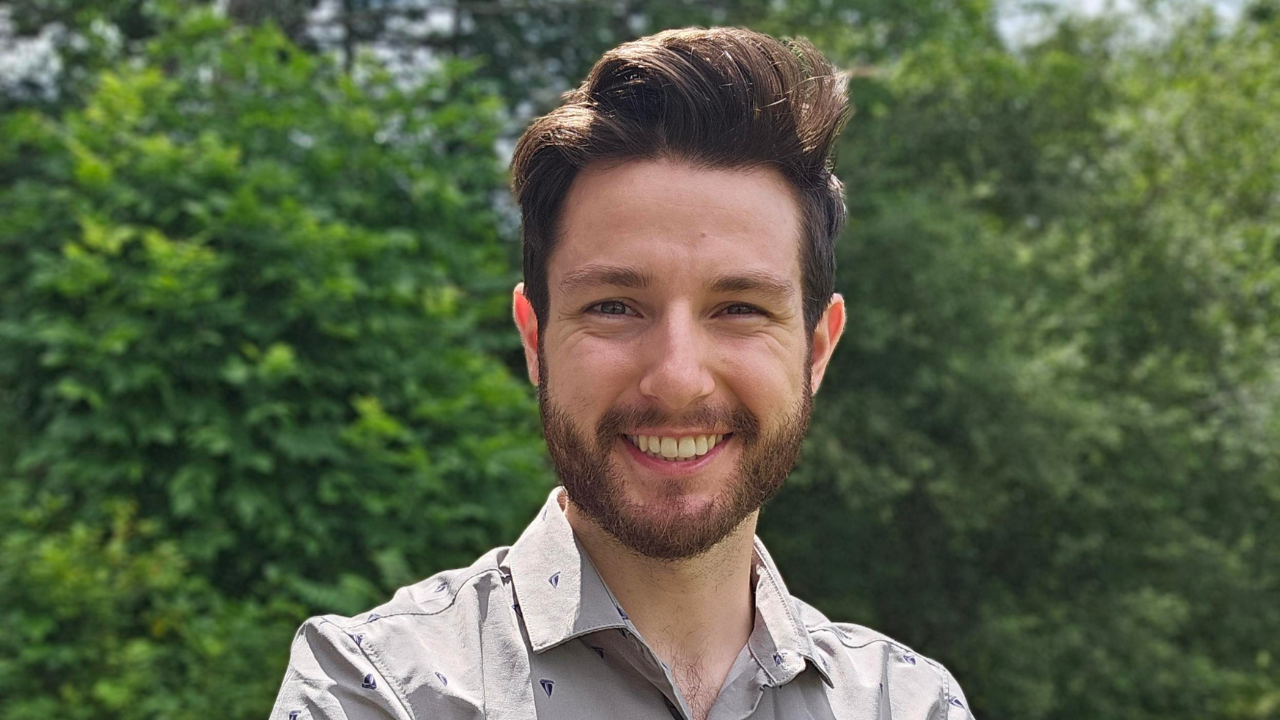The Expert Answers Q&As and columns reflect the expertise and opinions of individual faculty members and do not necessarily represent an official policy or position of the university.
content body

John Noonan, assistant research professor in Auburn University’s Department of Physics, is part of the Comet Research Group studying interstellar object 3I/ATLAS.
For only the third time in recorded history, an object from outside our solar system is passing through. Researchers at Auburn University’s College of Sciences and Mathematics are part of the global effort to study it.
The object, officially named 3I/ATLAS, is an interstellar comet — a rare visitor from another planetary system.
We spoke with the Comet Research Group’s Dennis Bodewits, professor in the Department of Physics, and John Noonan, assistant research professor, about what makes this object important and the leading role Auburn scientists are playing in its discovery and analysis.
What is this object, and why is it significant?
Bodewits: This is a comet-like object from another solar system — only the third interstellar object we've ever observed. That has big implications for astrobiology. Comets in our solar system deliver water and organic material, so seeing something similar from a different system passing through ours raises important questions: Are the building blocks out there the same as those that formed our planets?
Noonan: Imagine you’d never seen a leaf before. You find an oak leaf and think all leaves must look like that. Then you find a pine needle. You're looking at these two and thinking, ‘I don't understand how these are related. Are they related? Which is more common?’ This new object, 3I/ATLAS, is like adding a fern, completely unlike the first, somewhat like the second, but larger. It is a new type of leaf to our collection, and we will study it intensely. But does that mean at the end we understand the plant and the forest it came from? Probably not, but it's certainly more than what we had before. In the case of interstellar objects, we are just beginning to unravel which properties are inherited from their long journey in interstellar space and which are likely from their formation. And by doing so, it's going to tell us a whole new set of interesting characteristics.

Dennis Bodewits, professor in Auburn University’s Department of Physics, leads the Comet Research Group’s efforts to study the interstellar comet 3I/ATLAS.
How is Auburn involved in studying 3I/ATLAS?
Bodewits: We secured observing time on NASA’s Hubble (HST), James Webb (JWST), and Swift space telescopes — some of the most powerful and sought-after observatories available. Getting time on any of these is highly competitive, with acceptance rates under 10%. Because we had proposals prepared well in advance, when 3I was detected, we were able to act immediately while many other teams were still scrambling to submit requests.
Noonan: Finding out that there’s a new interstellar object to observe like finding out a week before the Super Bowl that you’re playing. It’s a huge deal, and we were prepared to jump in by having proposals ready to trigger.
How does collaboration work among researchers studying this object?
Noonan: The first two interstellar objects, 1I/Oumuamua in 2017 and 2I/Borisov in 2019, sparked many separate publications as observatories rushed to share their own findings. This time around, we were able to rapidly pull together a large collaboration to publish some key details — discovery, rotation, activity, color and comparisons — into one comprehensive, coordinated paper. It’s a more unified and efficient approach, and we have set up a website to help coordinate observations to maximize coverage of 3I.
What challenges do astronomers face observing 3I/ATLAS?
Noonan: Planning space telescope observations of an object moving this fast requires coordination. Observatories like the HST and JWST require very precise locations and tracking rates to ensure successful observations, which means that as soon as 3I/ATLAS was discovered we began working with astronomers across the globe to get more high-resolution observations. These observations give more precise information on where the object is and how it’s moving, which improves our understanding of where it will be in the future as we model its orbit. Both HST and JWST have specific ‘zones’ where they can point, so any observations of 3I must take place while it’s not too close to the sun in terms of angular separation and doesn’t place the spacecraft at risk due to any roll or orientation constraints.
The object’s closest approach to the sun — when it’s brightest and most active — will be on the opposite side of the sun from Earth. Our telescopes can’t safely look that close to the sun, and it will be daytime for ground-based observatories, so we won’t see it from here.
However, Mars will be relatively close at that time, about 0.2 astronomical units, or 18.6 million miles, away. Spacecraft orbiting Mars, with telescopes comparable to those on Earth, might observe it. The challenge is that several Mars missions are scheduled to be powered down soon, which could limit our ability to gather data from that vantage point. It’s a rare opportunity, but the availability of those spacecraft will be a key factor.
What does a discovery like this mean for the future of space science?
Noonan: Every single one we find helps that story. We’re still trying to understand how all these interstellar objects fit together — what they’re made of, where they come from, how they’re related. Each new one adds to the bigger picture.




